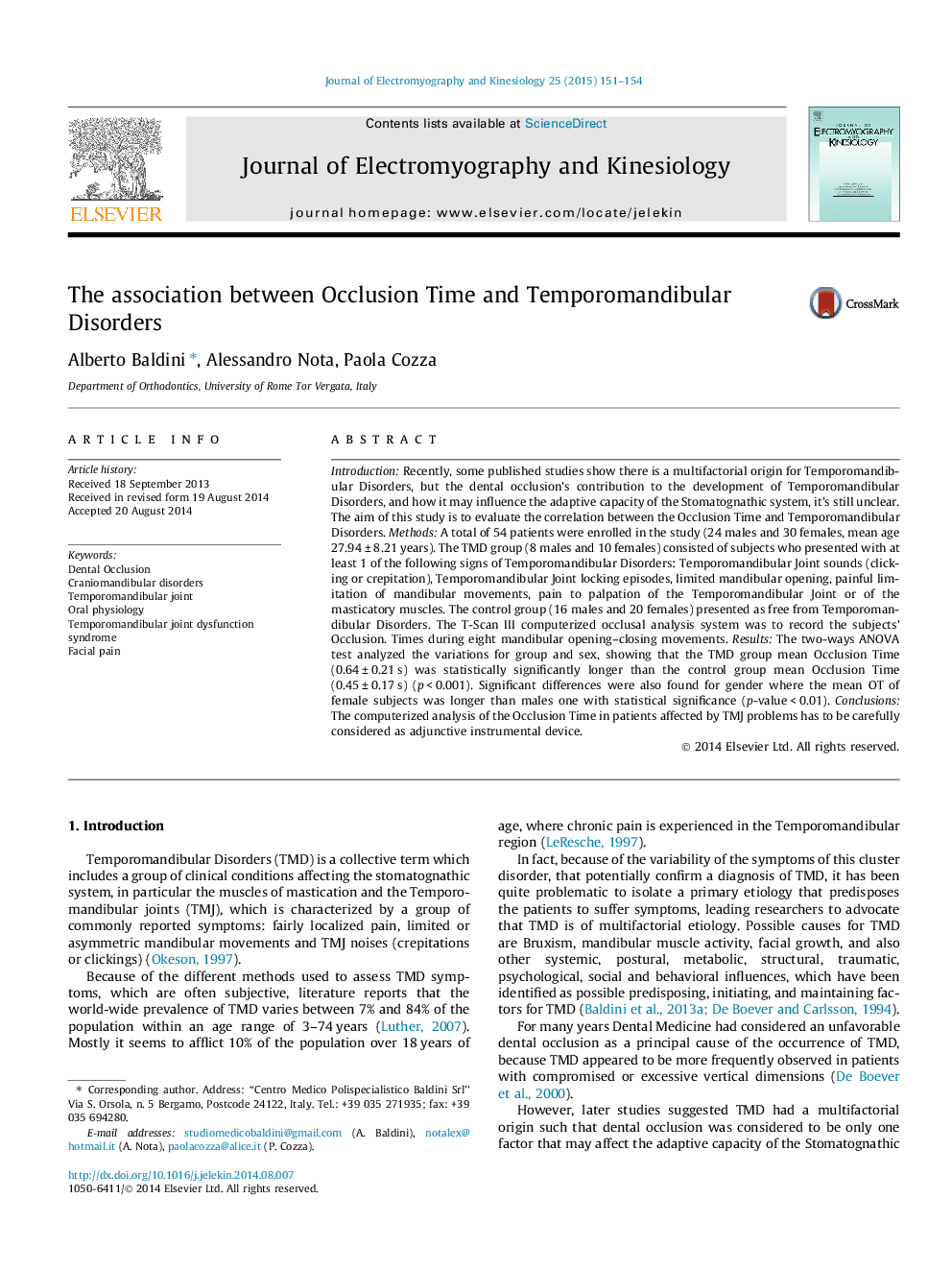| کد مقاله | کد نشریه | سال انتشار | مقاله انگلیسی | نسخه تمام متن |
|---|---|---|---|---|
| 6210384 | 1266215 | 2015 | 4 صفحه PDF | دانلود رایگان |
Introduction: Recently, some published studies show there is a multifactorial origin for Temporomandibular Disorders, but the dental occlusion's contribution to the development of Temporomandibular Disorders, and how it may influence the adaptive capacity of the Stomatognathic system, it's still unclear. The aim of this study is to evaluate the correlation between the Occlusion Time and Temporomandibular Disorders. Methods: A total of 54 patients were enrolled in the study (24 males and 30 females, mean age 27.94 ± 8.21 years). The TMD group (8 males and 10 females) consisted of subjects who presented with at least 1 of the following signs of Temporomandibular Disorders: Temporomandibular Joint sounds (clicking or crepitation), Temporomandibular Joint locking episodes, limited mandibular opening, painful limitation of mandibular movements, pain to palpation of the Temporomandibular Joint or of the masticatory muscles. The control group (16 males and 20 females) presented as free from Temporomandibular Disorders. The T-Scan III computerized occlusal analysis system was to record the subjects' Occlusion. Times during eight mandibular opening-closing movements. Results: The two-ways ANOVA test analyzed the variations for group and sex, showing that the TMD group mean Occlusion Time (0.64 ± 0.21 s) was statistically significantly longer than the control group mean Occlusion Time (0.45 ± 0.17 s) (p < 0.001). Significant differences were also found for gender where the mean OT of female subjects was longer than males one with statistical significance (p-value < 0.01). Conclusions: The computerized analysis of the Occlusion Time in patients affected by TMJ problems has to be carefully considered as adjunctive instrumental device.
Journal: Journal of Electromyography and Kinesiology - Volume 25, Issue 1, February 2015, Pages 151-154
